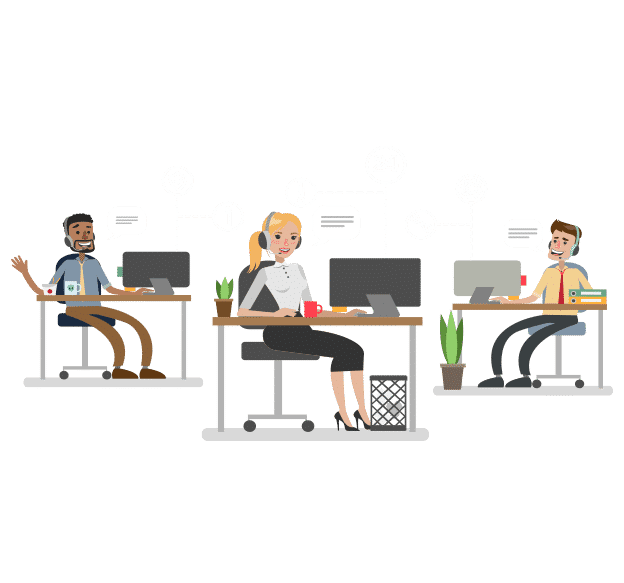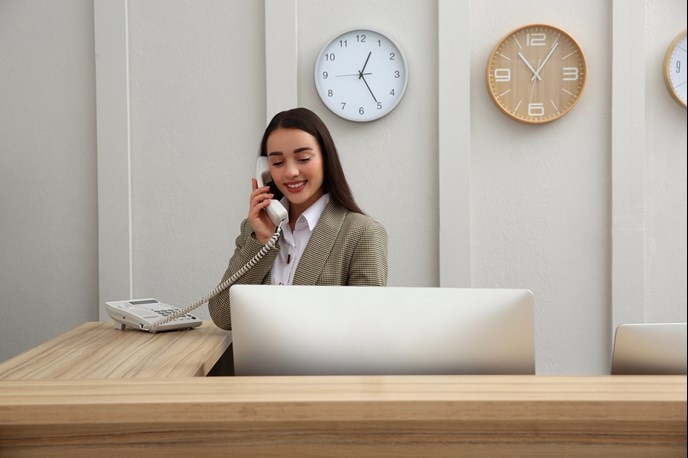All Categories
Featured
Table of Contents
- – What Is The Best Automated Answering Service, B...
- – What Is The Best What Is An Answering Service?...
- – What Is A Good Price For A 5 Mistakes To Avoid...
- – What Is The Best Virtual Receptionist Perth -...
- – Who Is The Best What Is An Answering Service?...
- – Best Melbourne Telephone Answering Service :...
What Is The Best Automated Answering Service, Better Known As Interactive ... Right Now
This device and its successors were developed by Sava Jacobson, an electrical engineer with a personal consulting company. While early voice mail used magnetic tape innovation, the majority of contemporary equipment utilizes strong state memory storage; some devices utilize a mix of both, with a solid-state circuit for the outgoing message and a cassette for the incoming messages.
"toll saving" below) (telephone answering service). This is useful if the owner is screening calls and does not wish to speak to all callers. In any case after going, the calling party must be notified about the call having actually been responded to (in many cases this starts the charging), either by some remark of the operator, or by some greeting message of the TAD, or resolved to non-human callers (e.
This holds especially for the Littles with digitally kept welcoming messages or for earlier makers (before the increase of microcassettes) with an unique limitless loop tape, separate from a 2nd cassette, committed to recording. There have actually been answer-only gadgets without any recording capabilities, where the greeting message had to inform callers of a state of existing unattainability, or e (virtual answering service).
What Is The Best What Is An Answering Service? The Ultimate Guide - Cms Brand

about availability hours. In recording TADs the greeting usually contains an invite to leave a message "after the beep". An answering maker that uses a microcassette to record messages On a dual-cassette answerphone, there is an outbound cassette, which after the defined variety of rings plays a pre-recorded message to the caller.

Single-cassette answering devices contain the outgoing message at the start of the tape and incoming messages on the remaining area. They initially play the announcement, then fast-forward to the next available area for recording, then record the caller's message. If there are many previous messages, fast-forwarding through them can cause a substantial hold-up.
This beep is typically described in the welcoming message, asking for that the caller leave a message "after the beep". Littles with digital storage for the recorded messages do not reveal this hold-up, naturally. A little may use a remote control facility, whereby the answerphone owner can sound the home number and, by getting in a code on the remote telephone's keypad, can listen to recorded messages, or delete them, even when far from house.
What Is A Good Price For A 5 Mistakes To Avoid When Hiring A Phone Answering Service?

Consequently the device increases the number of rings after which it answers the call (generally by 2, leading to four rings), if no unread messages are presently saved, however responses after the set number of rings (typically 2) if there are unread messages. This enables the owner to discover whether there are messages waiting; if there are none, the owner can hang up the phone on the, e.
Some devices likewise enable themselves to be from another location triggered, if they have actually been changed off, by calling and letting the phone ring a specific a great deal of times (typically 10-15). Some service companies abandon calls currently after a smaller sized variety of rings, making remote activation impossible. In the early days of Little bits a special transmitter for DTMF tones (dual-tone multi-frequency signalling) was regionally needed for push-button control, since the previously used pulse dialling is not apt to convey suitable signalling along an active connection, and the dual-tone multi-frequency signalling was executed stepwise.
Any inbound call is not identifiable with respect to these homes in advance of going "off hook" by the terminal devices. So after going off hook the calls should be switched to appropriate gadgets and just the voice-type is instantly accessible to a human, but possibly, nevertheless need to be routed to a LITTLE BIT (e.
What Is The Best Virtual Receptionist Perth - Local Phone Answering Service Right Now
What if I told you that you do not have to in fact get your device when addressing a consumer call? Another person will. So hassle-free, best? Answering phone calls does not require someone to be on the other end of the line. Efficient automated phone systems can do the technique simply as efficiently as a live agent and often even better.
An automated answering service or interactive voice reaction system is a phone system that interacts with callers without a live individual on the line - phone call answering. When business use this technology, clients can get the answer to a concern about your company simply by utilizing interactions established on a pre-programmed call flow.
Although live operators upgrade the customer support experience, many calls do not require human interaction. A basic documented message or directions on how a client can recover a piece of details normally solves a caller's immediate requirement - local phone answering service. Automated answering services are a basic and efficient way to direct inbound calls to the ideal individual.
Who Is The Best What Is An Answering Service? Company
Notification that when you call a business, either for support or product query, the very first thing you will hear is a pre-recorded voice welcoming and a series of alternatives like press 1 for customer care, press 2 for questions, and so on. The pre-recorded alternatives branch out to other choices depending upon the customer's selection.
The phone tree system assists direct callers to the ideal individual or department utilizing the keypad on a cellphone. In some circumstances, callers can use their voices. It's worth keeping in mind that auto-attendant alternatives aren't restricted to the 10 numbers on a phone's keypad. When the caller has chosen their first option, you can design a multi-level auto-attendant that uses sub-menus to direct the caller to the right sort of help.
The caller does not need to interact with a person if the auto-attendant phone system can handle their issue. The automatic service can path callers to a worker if they reach a "dead end" and require support from a live agent. It is expensive to employ an operator or executive assistant.
Best Melbourne Telephone Answering Service : Virtual Reception Deals Near Me
Automated answering services, on the other hand, are significantly more economical and supply substantial expense savings at approximately $200-$420/month. Even if you do not have dedicated personnel to handle call routing and management, an automated answering service improves efficiency by allowing your team to concentrate on their strengths so they can more efficiently spend their time on the phone.
A sales lead routed to customer support is a lost shot. If a consumer who has product concerns reaches the incorrect department or receives insufficient responses from well-meaning employees who are less trained to deal with a specific kind of concern, it can be a reason for disappointment and frustration. An automated answering system can reduce the variety of misrouted calls, consequently helping your employees make better usage of their phone time while maximizing time in their calendar for other jobs.
With Automated Answering Systems, you can produce a tailored experience for both your staff and your callers. Make a recording of your main welcoming, and merely upgrade it frequently to show what is going on in your company. You can produce as numerous departments or menu options as you desire.
Table of Contents
- – What Is The Best Automated Answering Service, B...
- – What Is The Best What Is An Answering Service?...
- – What Is A Good Price For A 5 Mistakes To Avoid...
- – What Is The Best Virtual Receptionist Perth -...
- – Who Is The Best What Is An Answering Service?...
- – Best Melbourne Telephone Answering Service :...
Latest Posts
Innovative Dental Answering Service Near Me ( Sydney)
Ai Answering System – ACT 2606
Quality Receptionist Service Near Me – Sydney
More
Latest Posts
Innovative Dental Answering Service Near Me ( Sydney)
Ai Answering System – ACT 2606
Quality Receptionist Service Near Me – Sydney